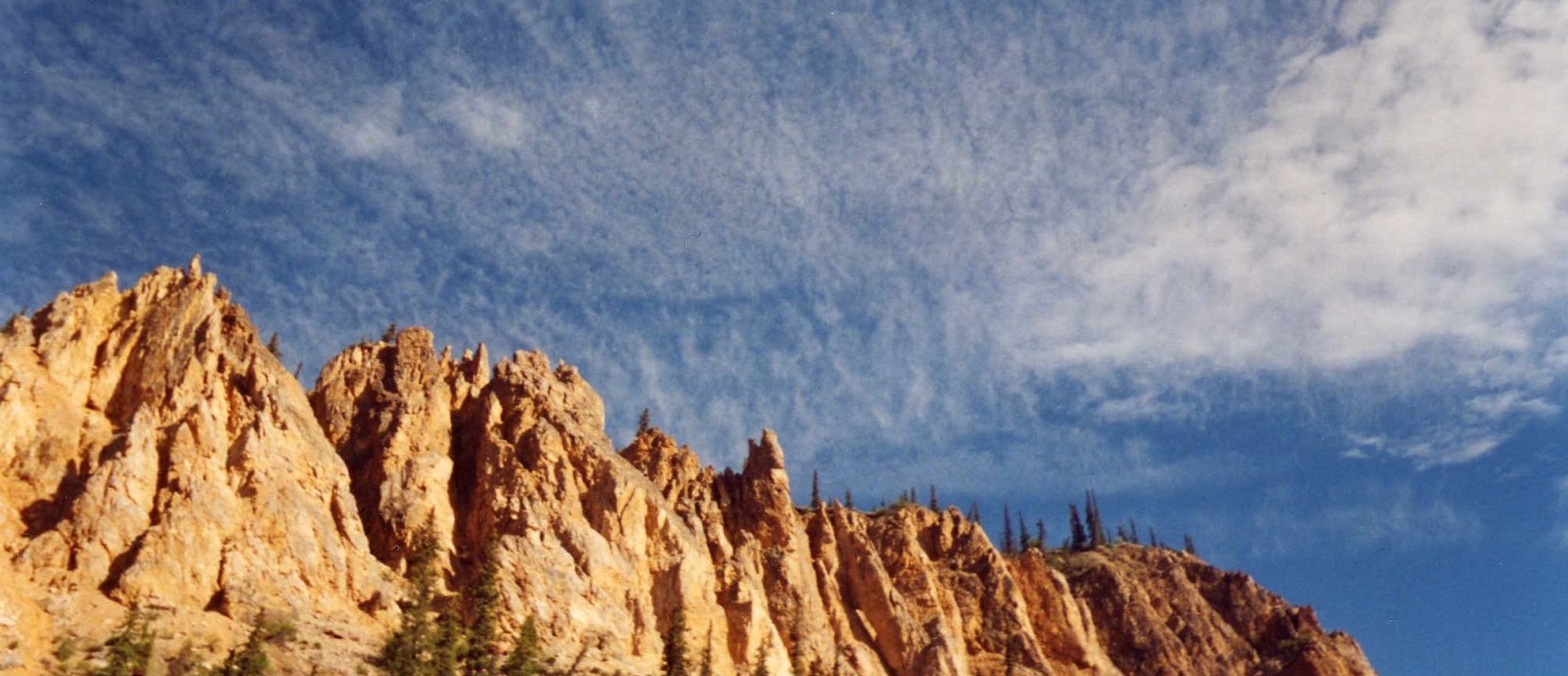Overview
View by Itinerary
View by Date
There are no events currently scheduled. Please check back soon.
About the Area
The Porcupine River, a legendary river of the Arctic, flows hundreds of miles from the Yukon Territory through Alaska before finally flowing into the mighty Yukon River. Paddlers on this river will see abundant wildlife, encounter few people, and experience some of the great wilderness solitude of the Far North.The Porcupine is one of the largest tributaries of the Yukon River and a historically important travel route. Single-channeled and clear-flowing, this mostly flat-water river flows past the native village of Old Crow and into Alaska. Once past the international border, the Porcupine flows through the Arctic National Wildlife Refuge past beautiful steep-walled canyons, rolling hills, and cliffs before meandering across the vast wetland basin of the Yukon Flats National Wildlife Refuge to its confluence with the Yukon River.
The Porcupine River area is the wintering home of the Porcupine caribou herd. In a pattern of migration established millennia ago, the caribou of the Porcupine herd leave their wintering grounds and arrive each spring on the Coastal Plain of the Arctic Refuge. This awe-inspiring wildlife spectacle evokes images of the long-gone buffalo herds of the Great Plains and spectacular gatherings of wildlife on Africa’s Serengeti Plain.
The caribou travel up to 400 miles from the wintering grounds in northeastern Alaska, the central Yukon, and the Richardson Mountains of the Northwest Territories. The herd — 129,000 strong — congregates on the Coastal Plain where the cows will give birth. It is a cycle that has gone on undisturbed for thousands of years.
Habitats along the river typify the eastern interior of Alaska and the west central Yukon. White spruce and black spruce make up the most common forest species, usually within a mix of aspen, dwarf willow, and birch. Although never completely north of the tree line, the trees grow smaller and more sparsely the farther north one paddles. Colder temperatures, less sunlight, and permafrost all contribute to this phenomenon.
Wildlife along the Porcupine includes caribou, Dall sheep, grizzly and black bear, moose, beaver, red fox, wolf, hare, common raven, rock and willow ptarmigan. This area also provides habitat for many raptors, including the peregrine falcon, the world’s fastest creature.
The Porcupine River enters the Yukon near the remote Alaskan town called Fort Yukon. At this point, the Yukon River is a large, multi-channeled river that flows through the Yukon Flats Refuge. The main channel is not always apparent when paddling.
Yukon Flats Refuge is about 100 air miles north of Fairbanks, encompassing about 12 million acres along the Yukon River. The Yukon River reaches its most northerly point in the Yukon Flats, breaking free from canyon walls to spread unconfined for 200 miles through a vast floodplain.
In the spring, millions of migrating birds converge on the refuge that, with its 40,000 lakes and other wetlands, has one of the highest waterfowl nesting densities in North America. An estimated 1.6 million ducks, 10,000 geese, 11,000 sandhill cranes, 15,000 loons, at least 100,000 grebes, and hundreds of thousands of songbirds nest annually in the refuge. Each year, the Yukon Flats serves as a major contributor to the migrations that occur along North American flyways. Waterfowl banded on the refuge have been recovered in 45 of the 50 U.S. states, Central and South America, Canada, and Russia.
Birds are not the only migratory wildlife dependent upon refuge wetlands. Salmon from the Bering Sea ascend the Yukon River, to spawn in the freshwater streams of their birth. Runs of king, coho, and chum salmon pass through and spawn in the refuge each summer.
This overview only begins to scratch the surface of this fantastic expedition through the fabled Yukon and the heart of Alaska. For more information, read The Alaska River Guide by Karen Jettmar, Alaska Northwest Books, 1998.

